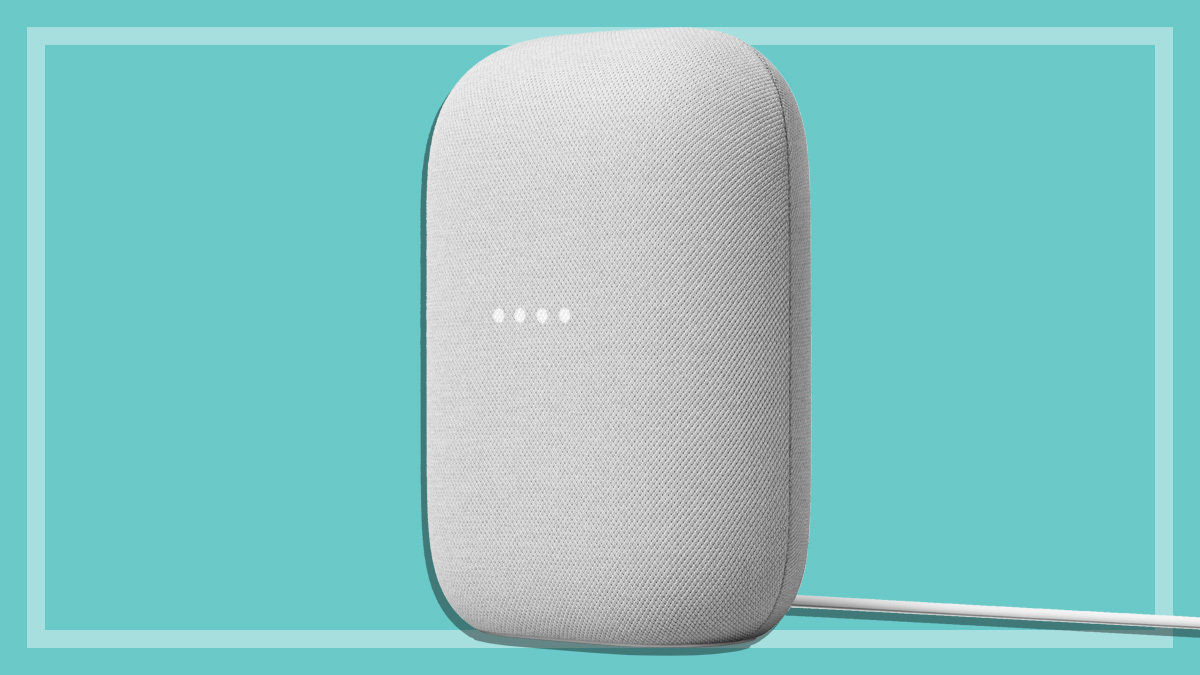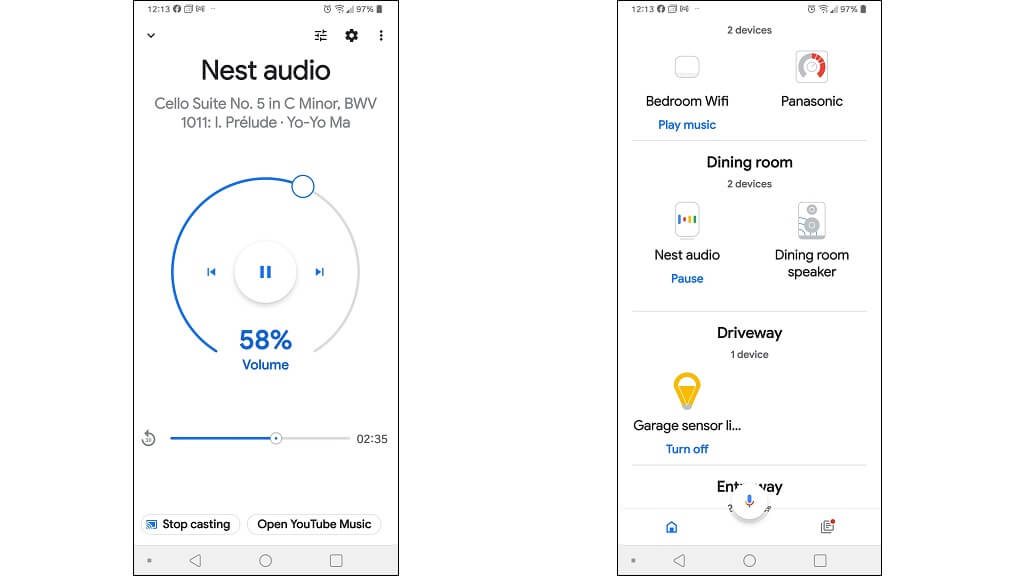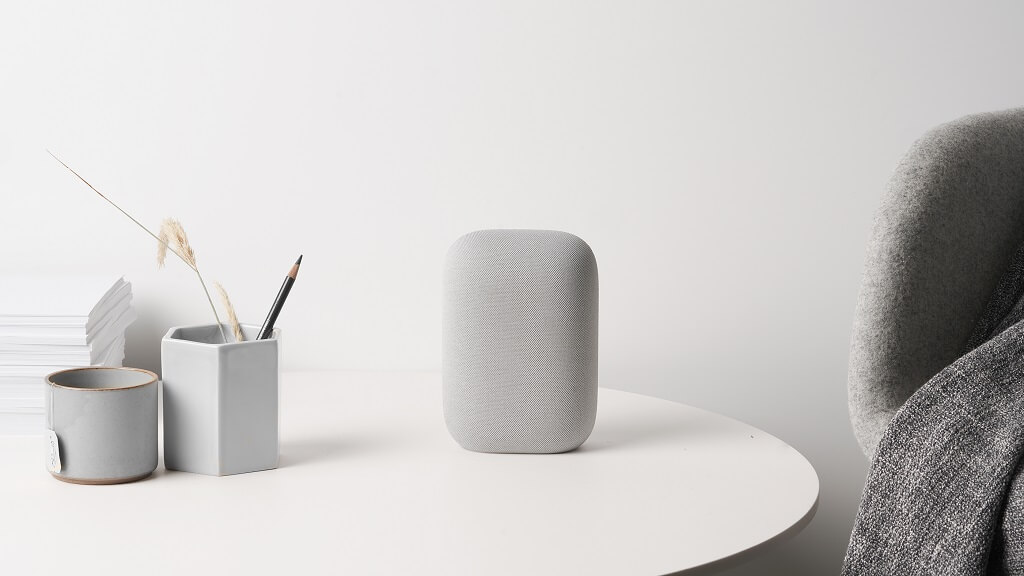Get our independent lab tests, expert reviews and honest advice.
Google Nest Audio speaker review

CHOICE verdict
The Google Nest Audio is a step up in both sound quality and design from Google’s previous small speaker offering. It’s an attractive modern speaker rather than a computing device. The metal speaker casing with a good-sized woofer and tweeter deliver solid sound at volumes that would suit a small- to medium-sized room. The Nest Audio is available in several colours in other countries, but only Chalk (off-white) and Charcoal (light grey) in Australia.
Price: $149
Contact:
store.google.com/auIf you’re the kind of person who enjoys talking to inanimate ‘smart’ devices, then you probably have one, or several, Google Home speakers.
Alternatively, you may have one of the many home entertainment devices that support Google Home or Google Assistant. They’re the kind of things where you walk around saying “Hey Google, what’s the weather like tomorrow?” or “Hey Google, play some Rolling Stones”.
The original Google Home was released in 2017 as a mid-priced smart speaker which delivered surprisingly good sound. It helped shine a spotlight on the possibilities available in a smart speaker.
Google has since slowly worked to improve sound quality and design to make their products more appealing to the average consumer. This has culminated in the new Nest Audio. Your existing smart devices will work seamlessly with it, provided they support Google Assistant.
Connection and control
The Google Nest Audio isn’t just a network (Wi-Fi) speaker. It also works with Bluetooth, allowing friends to pair their smartphone, tablet and laptop to the speaker so they can play music without hooking up to your home wireless network.
The controls on the speaker are clean and simple, with touch controls on either side for volume and a tap on the top to pause. For those who don’t want to use the voice assistant mode or mic for making and taking phone calls, a switch on the back allows you to quickly disable this function.
The outer mesh cloth is made from 70% recycled plastic encasing. It has a metal frame with a good-sized woofer and tweeter to deliver solid sound at volumes that would suit a medium-sized room. Also, 1.2 water bottles are offset from landfill with every Nest Audio device sold.
Smart group speakers
You can add another Nest Audio to the mix to deliver true stereo separation in one room, or add multiple speakers throughout the home.
Like Sonos, this lets you play the same audio in different locations which is great if you’re hosting a party or even doing chores.
Although the same speaker would be best for stereo, you don’t have to use the same model throughout the home. Check out our wireless speaker reviews to browse our selection of tested models.
Compatible devices include:
- Google Home
- Google Nest Mini (2nd gen)
- Google Home Mini (1st gen)
- Google Home Max
- Google Nest
- Chromecast
- Chromecast with Google TV
- Chromecast Ultra
- Chromecast Audio.
Sound projection
Unlike the original Google Home, which some have unkindly suggested looks more like an air freshener than a speaker, the Nest Audio looks more like a Sonos speaker than a computing device.
It has a 75mm woofer and 19mm tweeter, compared to the Google Home with 50mm full range driver and 2x passive radiators.
It also projects sound into the room rather than delivering it around the room. This means it can be placed in areas of your home where you would normally put bookshelf speakers, rather than simply in the kitchen or other high traffic areas.

We found that the best audio was achieved when the speaker was placed on a shelf about 40cm or so from the wall with some space either side.
The mid-range quality was very good and on par with a single speaker from the likes of Bose or Sonos, and the bass response was clear with good presence without being overpowering. Google claims that most of us play our music at no more than 50% volume and have optimised the audio for this level.

Voice assistant performance
The speaker has a three-mic array which was very accurate during testing – in both recognising the particular voice signature when making a request, as well as being able to act on a request across a large room.
The mic array also recognises when the ambient noise in a high traffic area goes up and down and adjusts the volume accordingly.
The Nest Audio adapts to your context and content, boosting bass at lower volume level, and raising mids and highs when you’re listening to speech. These functions can also be turned off if you simply want the volume to stay at a certain level.
The stream transfer function is another handy feature, particularly with a mix of different types of speakers that work within the Google Home environment.
Simply say “Hey Google, move the music to the living room speaker” or “Hey Google, play music on the dining room speakers” and the music is either transferred to the other speaker or played on all available speakers. This feature works well with YouTube music and Spotify.





